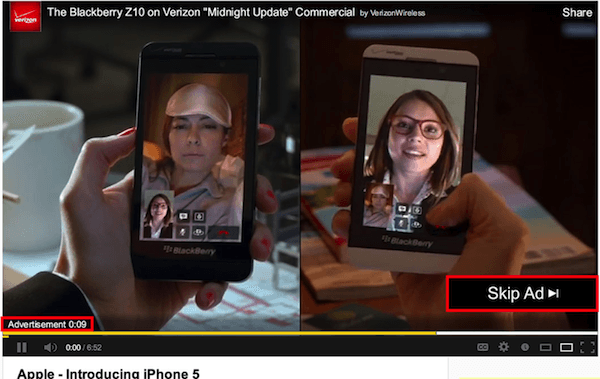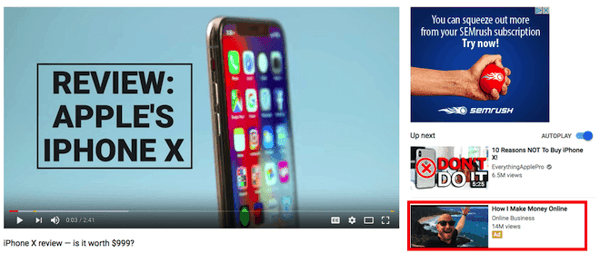Every day, five billion YouTube videos are watched all over the world. And they aren’t just being watched — they are being devoured. The average YouTube session by any one viewer is roughly 40 minutes, up 50 percent from the previous year, according to Omnicore.
An active, entertaining YouTube channel — which is free to create via a Google+ account (also free) — strengthens these users’ brands and extends their reach to new audiences. It could also build a base of subscribers that other firms utilizing YouTube will actually pay to advertise their products to.
Before launching a YouTube channel for the needs to make money on Youtube, you should decide what type of profit you are excited about. Are you looking to utilize YouTube as a promotional outlet for your own services and products? Or, do you want your video content to generate advert revenue right from YouTube?
How to Make Money on YouTube
There are two methods to make money on YouTube: as an advertiser and as an advert platform. As an advertiser, you pay YouTube for Preroll, Bumpers, or TrueView adverts that get your videos in front of potential buyers. As an advert platform, you publish videos that are watched enough to host others’ content as a paid affiliate or YouTube Partner.
Here is a breakdown of both monetization strategies, along with remarks from the YouTubers who have successfully made money utilizing each technique. Want to jump to a particular point in this article? Click on the following links to jump to each YouTuber, how much they are estimated to create, and how they are making it.
Then, at the bottom of this guide, learn about a bonus technique that content producers are increasingly considering as their YouTube channels become more prevalent to make money on Youtube.
1. Be an Advertiser
As an advertiser on YouTube, you are populating your YouTube channel with video ads created by you to make money on Youtube. The difference between YouTube adverts and, say, TV commercials, is that you get to show YouTube adverts to more particular and often more engaged audience segments. You will pay YouTube to host your adverts on other, highly watched YouTube channels that appeal to the same viewership you are targeting.
The channels on which you host your video adverts could range from big brands all the way to individual users who have made videos that are a hit with your fans.
When advertising on YouTube, you need to know to go in that you are playing the long game. It could be scary to pay others for top video slots that do not guarantee you will be seen by your ideal buyer — let alone get click-throughs to your site that you could convert into long-term customers.
However, studies show these adverts do pay off for advertisers during their time on YouTube: Those that see a TrueView advert (we will explain what these are in a second) are reportedly 10 times more likely to take the action prompted in the advert than the viewer would be on their own.
Here is a rundown of your three advertising options on YouTube:
TrueView Ads
Who does it: Clash Royale
YouTube revenue: $2,600 – $41,600 per month
Got a good story to tell that also has a connection to your product? TrueView is for you. TrueView adverts are your chance to make high-quality, longer creative spots that appear adjacent to the YouTube videos your target audience is already watching. These adverts come in two forms: In-Stream and Discovery.
In-Stream videos play right before the YouTube user’s chosen video, “in the stream” of that chosen video. Users could opt to skip this video after 5 seconds of it playing, as shown below, and jump to their content. In-Stream adverts could be between 12 seconds and 6 minutes in length.

Discovery adverts appear on the right sidebar of a chosen video, just below the “Up Next” video as a suggested result. See how this one looks below.

Due to the time you are allotted with this advert format, it is suggested that you make this kind of advert with the aim of views and brand development, rather than just clicks into your site. This advert ideally generates revenue from the long-term brand awareness that comes out of a story people do not want to skip, and one viewer keeps in mind the next time they approach your services or products.
Both In-Stream and Discovery are pay-per-view — you pay YouTube a fixed rate for every view the advert receives — and their return on investment (ROI) could be measured in Google AdWords. YouTube tallies one new “view” after 30 seconds of watching or a click on the video as it’s playing. If the video is less than 30 seconds, views are tallied from people who watch the entire advert. (We’ll clarify how AdWords manages all three advert codecs in a minute.)
Clash Royale, a prevalent game app for mobile devices, has produced TrueView adverts which are consistently in YouTube’s top 10 most highly watched adverts of the yr. The company’s 2017 advert, “The Last Second” (shown below), garnered more than 110 million views by the end of that yr. This campaign contributed to a YouTube marketing strategy that makes the app developer no less than $2.6 thousand per month, as estimated by SocialBlade.
Preroll
Like In-Stream adverts, Preroll adverts play in the stream immediately before a user’s chosen video. The difference is this advert type cannot be skipped after 5 seconds. These videos also run a maximum of 30 seconds, although YouTube recently confirmed it’ll limit advertisers to 15- and 20-second options beginning this year.
Because viewing is required in this advert format, advertisers pay per click, so make the click worth it. A preroll advert with an enticing call-to-action that directs viewers to an appropriate landing or buying page on your site could be an enormous lead-generator for the sales team.
You could also leverage YouTube’s remarketing options, which enable you to send new videos back to users who have already engaged with your YouTube channel. When you are a HubSpot user, and you have built smart forms for capturing new info on returning visitors, remarketing could be a terrific addition to an inbound marketing campaign.
This remarketing option helps you learn more about a person’s background and interests once they receive new videos that bring them to new landing pages.
Bumpers
Bumpers are the shortest adverts you could buy. These six-second spots play just before a viewer’s chosen video (just like the above two options) however are greatest for brand awareness in the short breaks between long videos, or a YouTube playlist a user may be listening to in the background.
While they may be brief, YouTube found 90% of their bumper ads were remembered later by viewers. Bumpers are sold through cost-per-minute (CPM) bidding, which means you pay for every 1,000 plays of your advert on YouTube. They are the greatest used as a complement to a TrueView advert campaign.
So how do you track the performance of those three video advert formats? Once you’ve made a YouTube channel and uploaded your video content, you could open a Google AdWords account and link it to your video campaign. In AdWords, choose the campaign type, advert format, your budget, and to whom and where to show each video on YouTube.
You could target very particular audiences, and track the conversion rate of each video individually to see how much business (and revenue) you are driving.

